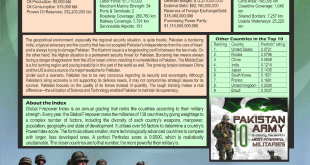The dialogue process for bringing a long-lasting peace in Afghanistan has once again got momentum. The war-torn country, during the last nearly four decades, has suffered colossal losses in form of physical or infrastructural damages, human miseries, tortures or detentions, agonies and pains inflicted on innocent Afghans. In such an environment of cynicism and given the background of such wholesale destructions, dreaming peace is not a joke now; it’s not going to be as easy as it is being seen.
Internally, there are hurdles and strong lobbies that pose a considerable threat to peace in Afghanistan. These lobbies want power, privileges, money and political clout only in their hands. Another important factor is the hardened positions that the parties involved in the conflict have taken. Both sides claim to be the legitimate representatives of the Afghans. The current National Unity Government asserts that those who are involved in this fight or insurgency have to enter the mainstream and accept the supremacy of democratic institutions while the resistance forces maintain that these institutions have been shaped and fostered by the foreign forces; hence they are unacceptable to them. These are the conflicting stances adopted by the warring parties; and converging the opposing viewpoints requires a neutral yet practicable approach for which showing enormous flexibility is inevitable.
The resistance forces, or more rightly the Taliban, need to show flexibility in their hardened stance of restoring their regime on the lines they were ruling previously — without any institutional checks and balances — until their ignominious fall. On the other hand, the incumbent government in Kabul needs to be relaxed on its point of accepting of institutions as an ultimate demand, because taking such a position wouldn’t serve the purpose of bringing long-lasting peace to the country. If both sides remain embedded in their viewpoints, the war will escalate and the public, which they rule, will be affected the most.
 Furthermore, there is a Daesh factor as well. The monstrous outfit posing grave threat to both warring parties. If this outfit entrenches in the country, then there won’t be any space for any other actor. Both parties have to unite to crush this rising menace. If they do not reach on an agreement in the near future, then Daesh may replace Taliban in Afghanistan as reports suggest that their influence in Khorasan region is growing day by day.
Furthermore, there is a Daesh factor as well. The monstrous outfit posing grave threat to both warring parties. If this outfit entrenches in the country, then there won’t be any space for any other actor. Both parties have to unite to crush this rising menace. If they do not reach on an agreement in the near future, then Daesh may replace Taliban in Afghanistan as reports suggest that their influence in Khorasan region is growing day by day.
Another faction is the Fidai Mahaz Group — a Taliban offshoot — that is, though, limited to only a few areas yet it wields huge influence there. They are also among the same hardliner groups and they have succeeded in winning fighters from other insurgent groups.
Externally, the role of regional countries in bringing peace to Afghanistan is very crucial. First and foremost is Pakistan that has always been a key player in Afghanistan’s internal politics. In the current scenario, Pakistan should facilitate, mediate and negotiate until both the parties come to a fruitful conclusion. Pakistan should respect the integrity and sovereignty of Afghanistan while playing such a role so that Pakistan may not be termed as a game-spoiler rather than a sincere facilitator.
Second, Iran too has a critical importance for Afghanistan. Coming into power of Taliban or another group will be directly threatening to its Shiite ideology. Furthermore, after lifting of international sanctions, Iran will now seek to play an active role in the regional politics — a manifestation of which can be found in recent Saudi-Iran spat.
Third, People’s Republic of China cannot be seen as a neutral observer. Its bordering area with Badakhshan province of Afghanistan is unstable since many years and if extremist forces took hold of power in Afghanistan, the separatist movements may get encouraged, thus posing a serious threat to China’s integrity. Furthermore, China’s future plans of trade with the regional countries are also directly related to stability in Afghanistan. China is a key player in reviving the peace process as it seeks a political role in the country and it is highly probable that it would help in installing a neutral, but stable, government in Kabul.
Fourth, Russia was, at first, a silent spectator pursuing a wait-and-see policy, nevertheless after the rise of Daesh, it has reportedly established its links with the top Taliban leadership. Central Asian States share borders with Afghanistan and instability there and in Afghanistan will pose an enormous challenge to Russian stability. To dismantle Daesh in Afghanistan, Russia will be supporting, albeit unwillingly, Taliban’s future role in Afghanistan.
Fifth, India is also vying for a considerable say in Afghan politics in order to counter Pakistan’s influence. It would put in all-out efforts to strengthen the current government — it is already supporting Kabul government in building infrastructure. In the areas bordering Pakistan, it is engaged in developing new sister cities and establishing new consulates. India will take every step either politically or through proxies to stop Taliban’s return to power.
United States, at last, has no other option but to bring stability in Afghanistan, in what way it may be. The United States wants a stable Afghanistan because it is seeking a drawdown of its forces from the Afghan soil in order to reduce the burden that this unending war had on its economy. The US will never want derailing of democracy rather it will support Taliban’s return to power through proper democratic process.
In the end, it is pertinent to mention that solving the Afghan enigma is a time-consuming job and will need considerable patience and tolerance from every player. At the end of the day, peace will triumph in Afghanistan, but not without testing the mettle of every actor.
 Jahangir's World Times First Comprehensive Magazine for students/teachers of competitive exams and general readers as well.
Jahangir's World Times First Comprehensive Magazine for students/teachers of competitive exams and general readers as well.



